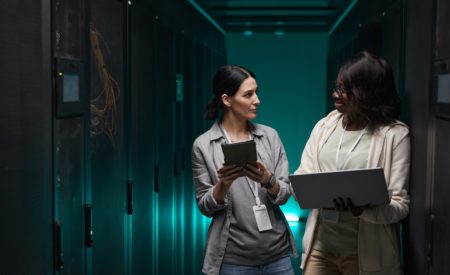
Attila Laczay
Data protection regulations are getting more specific around the globe. GDPR controls the way firms use data of EU citizens, in the same year California state passed CCPA to control consumer’s data, making organizations accountable.
By 2022 responsible enterprises demonstrated their commitment by completing the most burning immediate adjustments on the area of Telemarketing, Promotional emails and Video surveillance but compliance with the “Right to be forgotten” (Regulation A17) and “Destruction at end of purpose” gives massive headache to SAP system owners and can never be complete without proper data management.
This blog introduces how the SAP ILM solution architecture is leveraged to comply with the above regulations and meant for otherwise experienced SAP system administrators as mini-bootcamp to understand the concept prior to technical enablement.
It is crucial to consider that privacy regulations are not on the highest level of compliance requirements. Country or state specific regulations on the area of banking, finance and taxing, all enjoy priority against the data protection rules. As data of business transactions shall be retained by law, companies are also obligated to preserve the related data of consumers beyond the end of business processing, despite the enforcement of “right to be forgotten”. When the business purpose is due (marked with an orange circle on the chart below), personal data should be destroyed, but as the related transactional data must remain retained due to prioritized regulations, personal data retention is also enforced. Master data remains stored, blocked away from general access, available only for special purposes. This is summarized on chart: “Consumer and Transactional data Lifecycle”

Let’s see how enterprises running SAP ERP systems can utilize the ILM framework for the above purpose.
The Business Functions to leverage retention management and master data blocking, are all at the SAP Switch Framework cockpit (t-code: SFW5):
Business functions as grouped above may be separately activated with no relation or prerequisite of each other. Activation shall make a bunch of related transactions available, out of which we’re discussing the below few in this post: IRMPOL (ILM Retention Policies) for configuring Retention Management and Blocking access to the transactional data, and CVP_PRE_EOP (Block Customer & Vendor Master Data) for blocking access to the Master data regarding Customers and Vendors. Let’s summarize the functional coverage of these SAP ILM related Business functions and Transactions below:

The central point to establish the controls of data accessibility with SAP ILM is the Retention Policy framework. These configurations define how long the data shall be retained prior to final destruction, in compliance with taxing and audit regulations, as well as the time of blocking general access to fulfill GDPR or other, underlying regulations. While the technical setup of the Retention Policy framework was made relatively straight forward via the ILM Help portal articles, the key to understand the expected system behavior is to get familiar with the terminology used in the IRMPOL transaction.
Below is an example of these configurations in transaction IRMPOL, using the above-mentioned evaluation of financial documents by posting date. The retention policy is comparing the posting date of every documents against the min – max retention time periods, which are 15 – 30 years after the posting date.

Financial documents falling within this date range are blocked from general access, the authorization required to display is S_IRM_BLOC / $DPP. There is no special S_IRM_BLOC authorization required to display them prior to the min. retention time is reached. Documents beyond the mandatory destruction date, are expected to be destroyed by the next execution of destruction job. Accessing them would require the establishment of legal hold and authorization S_IRM_BL_M. Using the instruments of ILM Blocking and Retention management, SAP system owners can establish processes to comply with both legal and personal data related requirements concerning the business documents in their system. Let’s explore further in the next section the tools SAP delivered for blocking access to master data of Customers, Vendors, Business Partners.
As appears on chart “SAP ILM related Business functions and Transactions” above, the business function ERP_CVP_ILM_1 is leveraged2, which in practice means execution of report: CVP_PRE_EOP to block Customer / Vendor data. “Simple blocking” obviously aims to block access to all Customers or Vendors which are not actively involved in any open business processes at the time of execution. As shown below, the master data blocking scenario at several points interacts and eventually relies on the underlying Retention Management processes established for transactional data. Fulfilling such a complex criteria requires verification of several, various conditions including the status check of business documents related to the particular Customers / Vendors.

Verification considers:
Once successfully blocked a Customer or Vendor account, the prior introduced $DPP authorization value appears in the account control. The account is blocked for postings and marked for deletion. If changes for any reasons were still necessary, the reversing process is to be executed to unblock the account. (CVP_UNBLOCK_MD)

To close the circle between the blocked Customers / Vendors (master data) and the related business documents, the belonging line items also become unavailable for general access (withouth $DPP authorization) which delivers compliance with the multi level expectations prior introduced.

Despite it’s complex logic, the Customer and Vendor blocking scenario is not a difficult process. Understanding of the overall design and the awareness of each particular procedural step holds the main challenges for most administrators rather than the technical configuration, which is why I choose to focus on these areas mostly.
Sharing below some of the most common questions around this topic.
Is it mandatory with SAP ILM to move transactional data beyond the business purpose to an external storage out of the SAP system?
Indeed it isn’t. As shown in my post, SAP ILM framework is leveraged only for Retention Management purposes, with no data management action assigned to the defined periods. Unless we assign the action of data archiving or HANA data aging to be carried out during the retention period, the data remains in the main database until destruction.
Is the setup of Retention Management for Transactional data, prerequisite of the use of Simplified blocking of Master data ?
While the completion of RM setup and creation of active retention policies is a prerequisite, the need to actually process data (and apply a data management action) is subject to the particular business objects which are associated with the Customers and Vendors in scope for blocking. In other words, the implementation of Retention Management rules are prerequisite of the use of Simple Blocking but not all business objects have to be processed by archiving, blocking or destruct prior to succeed with blocking of the related master data. Material management is typically an exception where the establishment of RM rules, would already satisfy the the technical needs to carry out successful blocking of the related master data.
What SAP NW version is required to use ILM Retention Management and Simplified Blocking ?
All functions concerned in this post were released a long time ago, as of SAP NW 740 SP13.

Free SAP data archiving report
Proceed Group’s free SAP data archiving report analyses your ECC or S/4HANA data in minutes and pinpoints savings, performance boosts and compliance gaps before you migrate to RISE or the cloud.
Read more

SAP ECC archiving – Customer story
To keep SAP ECC and operations running smoothly, a global food business archived 14TB of legacy data and moved attachments to a content server. The result was a leaner 11TB database and a stronger foundation for future growth.
Read more

SAP decommissioning and its role in modern IT strategy
Stopping legacy SAP systems is easier said than done. This article shows why SAP decommissioning deserves a place in every transformation roadmap, what a successful project looks like and how to secure buy-in from finance, IT and compliance teams.
Read more
© Copyright 2026 Proceed Group | Website by Union 10 Design